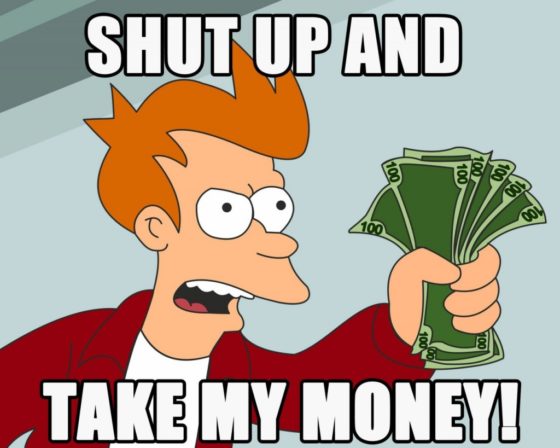The fifth and final article written for Dr. Carter’s Social Psychology course, Bailey Ratfliff and Erin Kosmowski discuss an article dealing with how much are people willing to pay depending on the situation.
When you go to buy something, like a t-shirt of your favorite band, wouldn’t it be nice if you could just pay what you want? Then, you could go through the drive-thru at Chick-Fil-A and be told the car in front of you paid for your meal! These methods are called, respectively, pay what you want and pay it forward, two forms of consumer elective pricing. How much would you pay for that t-shirt if you got to choose the price? What if you decided to pay for the next car’s lunch, how much would you be willing to pay? These studies by Nelson, A. Gneezy, and U. Gneezy, seek to find the relationship between pay what you want and pay it forward amounts. In which method are people willing to pay more?
In study one, which was conducted at Cartoon Art Museum in San Francisco, participants were told either they could pay their entrance fee forward for another museum goer instead of paying for their own admission, in one condition, or pay what you want in another condition. It was found, in accordance to the experimenters’ prediction, that the pay it forward condition paid more money than the pay what you want condition. In study two, the conditions were the same at the same museum, but the wording of what the people in the pay it forward condition were told was changed. People paid more in both conditions for this study, but still paid more for the pay it forward condition than the pay what you want condition. In study three, study two was replicated but participants were given a colored sticker, blindly labeling them as pay it forward or pay what you want group. The cashier in the gift store then recorded their purchases and their colored stickers to see if either condition spent more in the gift shop. The conditions were found to have spent around the same amount of money. For the final study, conditions were set as in study two but at a coffee shop instead of a museum. Again, those in the pay it forward condition paid more than those in the pay what you want condition.
The researchers believed that descriptive norms were playing a role in the participants’ actions. In the first two studies, people fell subject to the norm of reciprocity. Since another person paid for them, the participants’ felt that they had to do the same for a future attendee. Subjects experienced kindness and generosity and felt as if they must pass it on to reciprocate. There was also some pluralistic ignorance occurring, leading the participants to believe the norm was to pay more and followed suit. People may have privately believed they should pay less but decided to pay more because they believed that’s what others did.
The study does a good job supporting its hypothesis and eliminating any confounding variables that may have also explained the results, though it does not go into further details. They do not discuss if witnessing an act of generosity will impact the participant’s amount paid. Another thing that would have added to the study was to see how the amount paid could be manipulated through a third party’s actions, such as having the earlier guest pay more for the participants’ ticket or witnessing someone pay more for the pay what you want than average. They also focus on for profit organizations so adding a nonprofit organization to the study could show very different results.
Get connected!
Instagram & Twitter: #PsychRC @RC_Psychology
Facebook: https://www.facebook.com/rcpsychology
Blog: https://psych.pages.roanoke.edu/
Linked In: https://www.linkedin.com/groups/RC-Psychology-8140491/about
Website: http://www.roanoke.edu/inside/a-z_index/psychology
